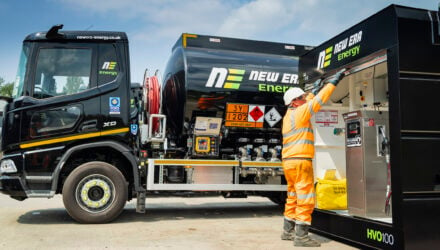In a joint statement issued to coincide with COP26, the leaders of the G20 nations recognise the need for immediate action to tackle climate change and limit global warming to 1.5°C as per the Paris Agreement of 2015.
The goals of COP26 include phasing out coal, ending deforestation, encouraging investment in renewables, and speeding up the switch to electric vehicles (EVs). The G20 accounts for over 85% of global vehicle sales, underlining the significance of the G20 Rome Leaders’ Declaration, and the COP26 declaration on accelerating the transition to 100% zero emission cars and vans.
Global EV adoption is already rising sharply. According to IEA data, registrations grew 41% in 2020, even as global vehicle sales fell, taking the worldwide EV fleet to 10 million units.
This may seem like a sharp rise, but current growth rates will take EVs to just 7% of the global fleet in 2030. Yet to meet the aims of the Paris Agreement, at least 20% of the global road fleet needs to be electric by 2030, with electric drivetrains accounting for 35% of all vehicle sales in 2030.
That means a surge in EV registrations in the coming years with profound implications for a global automotive industry which needs to act now to ensure there’s a strong and sustainable ecosystem in place to support this transition to electrification. That means planning at every stage, from product development, marketing, and sales, to servicing and repair. There will be a cost, which must be borne by all—but the cost of doing something now pales in comparison to the cost of not doing enough.
The ecosystem’s lack of EV experience
EVs are an excellent alternative to combustion-engine vehicles. Not only do they offer zero emissions driving at the point of use, but also fewer moving parts under the hood means less can go wrong.
Of course, sometimes it does, and that’s why we have insurance. Vehicle insurance is almost unique in the insurance world because it’s a legal requirement, and accounts for a significant part of the total cost of ownership (TCO)—typically between 10% and 12% of the TCO of an ICE vehicle. Insurance premiums are based on complex algorithms and decades of experience. New technologies, however, mean new risks, which in turn can mean higher premiums. When it comes to EVs, the insurance industry has relatively little experience—and this underlines why we need to see insurance as a key stakeholder in the acceleration of electrification.
The vehicle manufacturers also have very little experience with EVs. Today’s burgeoning EV market is made up of a growing range of increasingly exciting models featuring cutting edge technology. But the advantages of bringing vehicles to market at speed are lost if products are launched with haste.
Product development must include design for repair, with repair technicians appropriately trained and equipped not only in the vehicle manufacturers’ own networks but also in the independent repair sector. And although battery costs are coming down, they still represent up to 40% of the cost of the vehicle; everything must therefore be done to prevent the current lack of battery repairability resulting in a relatively minor shunt ending with the insurers writing off the vehicle.
On the cusp of a surge in electrification, this is the perfect opportunity for automakers to work more closely with the independent repair sector, which in many markets will underpin a strong and supportive EV ecosystem. In an ideal world, vehicle manufacturers would factor in ways for body shop repairers to work safely on vehicles with high voltage systems, without those repairers needing to use specialist and proprietary diagnostic equipment. The goal should be an EV customer experience that equals or betters the expectations shaped by the long-established combustion engine ecosystem—but this can only be achieved through collaboration between vehicle manufacturers, the independent repair sector, and the insurers.
A different experience
There are practical differences between the ICE and EV ownership experience, but owners shouldn’t have to think harder about charging than refuelling, and they certainly shouldn’t face a more complicated insurance experience. It’s up to all stakeholders to help consumers make the switch and become comfortable with the many benefits of EV ownership.
For insurers to promote effectively new technology, they need understanding and insight to correctly match risks to insurance premiums, arrange vehicle repairs, and crucially, ensure the safety of repair technicians. The customer? They just want their vehicle back on the road safely and quickly.
Achieving all this requires close collaboration between all parties and careful costing to prevent high value systems—let’s say it out loud: batteries—dominating vehicle price and impacting the vehicle’s value proposition. Insurers need to collaborate with vehicle manufacturers to understand new technologies, and with governments and regulators to encourage and enable the safe and effective adoption of these new technologies.
Doing nothing is not an option
EVs must be competitive to insure in the race to zero emissions mobility. At Thatcham Research, we’ve been advising on design simplification for decades. In our workshops, our highly experienced technicians pore over new vehicles, working on high voltage systems, assessing the challenges associated with a range of repairs, and identifying safe procedures. And our research underpins the data that insurers use to assess the risk of a vehicle. Insurance premiums increase with uncertainty, but our intelligence can reduce insurers’ uncertainty, enabling them to provide peace of mind to consumers.
The COP26 call for increased EV adoption is loud and clear. Doing nothing is not an option, and as an industry we will act—but we must get it right. And if we do, we can ensure there’s a financially and environmentally sustainable ecosystem to support vehicle electrification.
Author: Jonathan Hewett, Chief Executive of Thatcham Research







